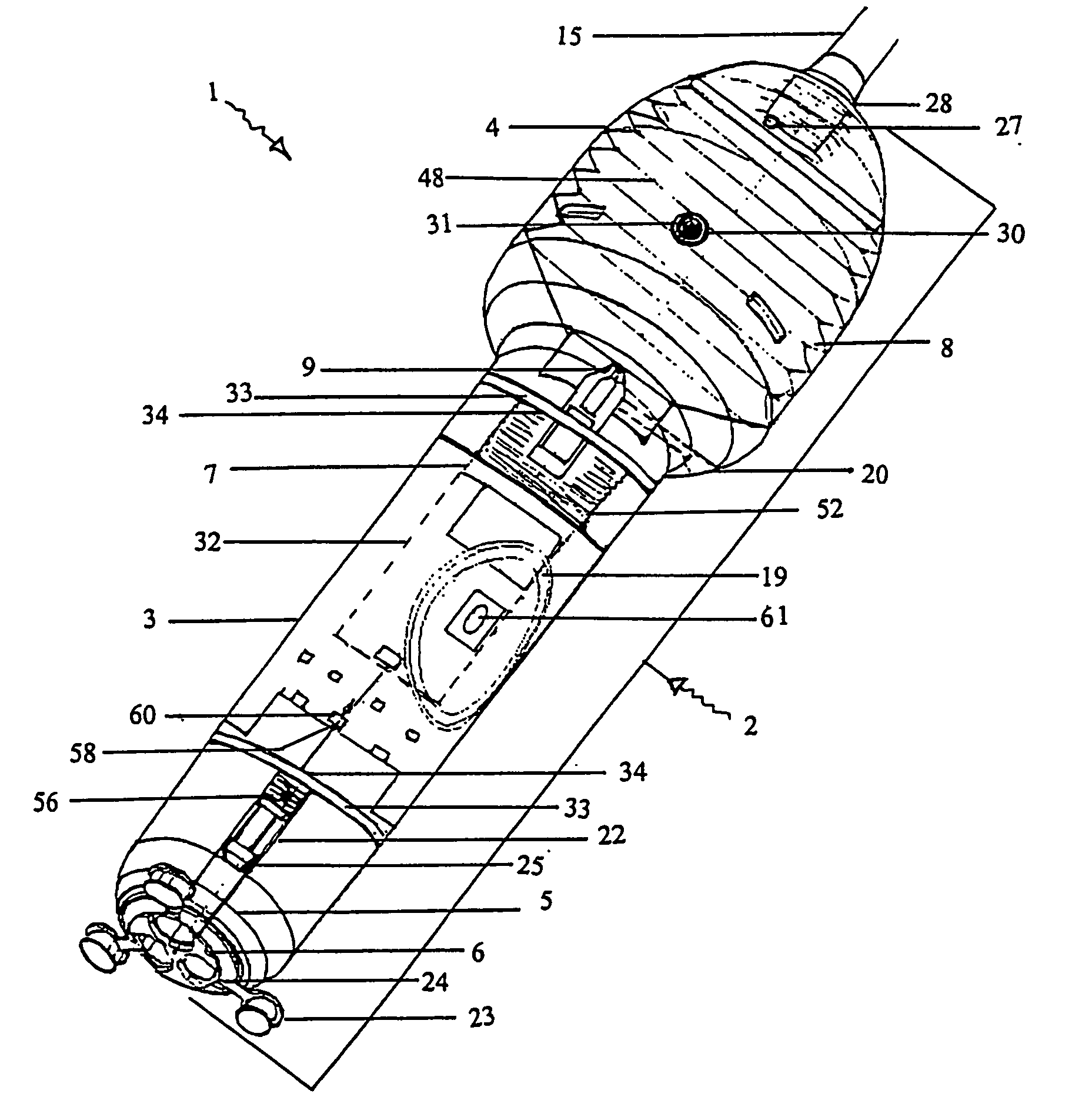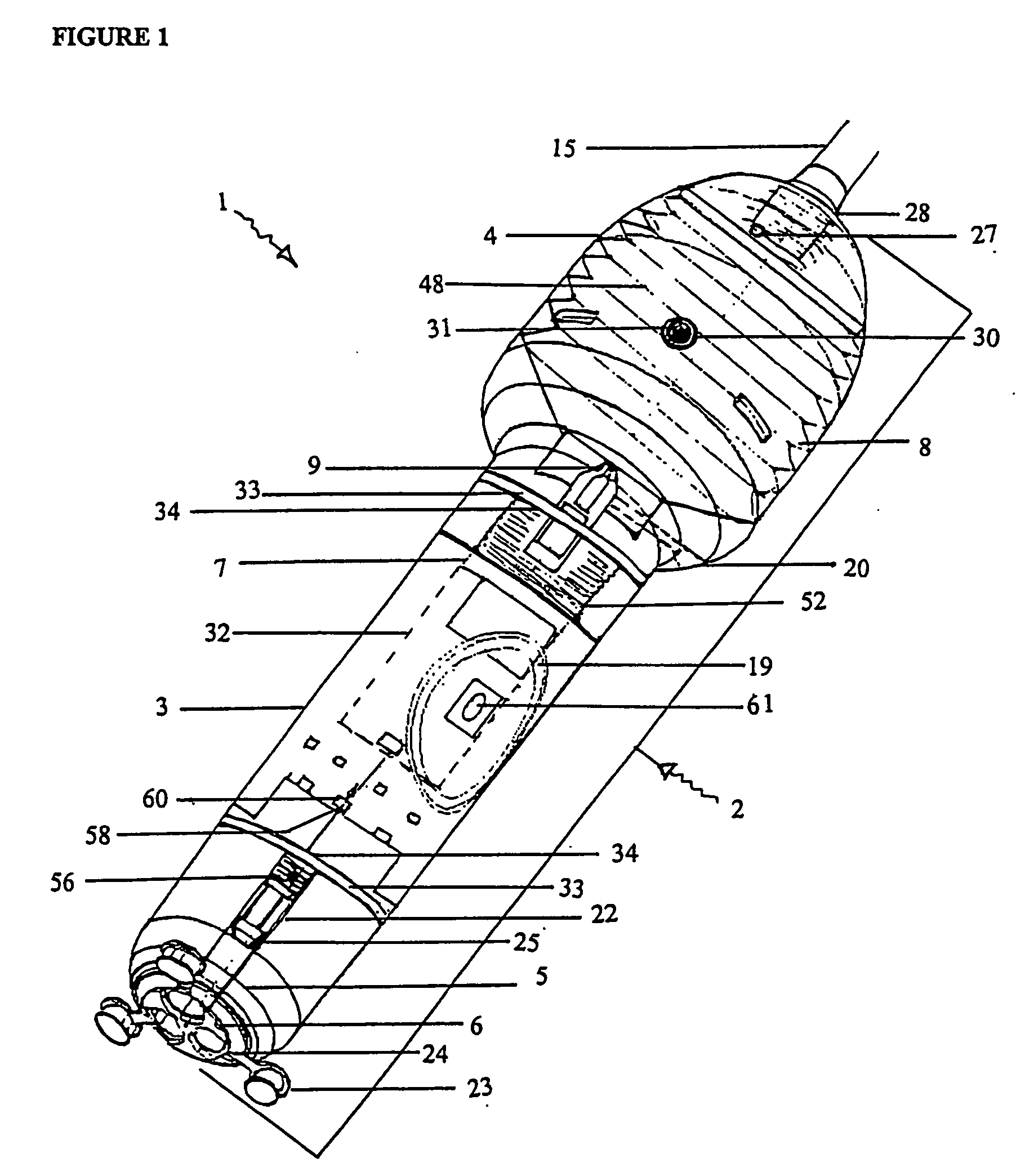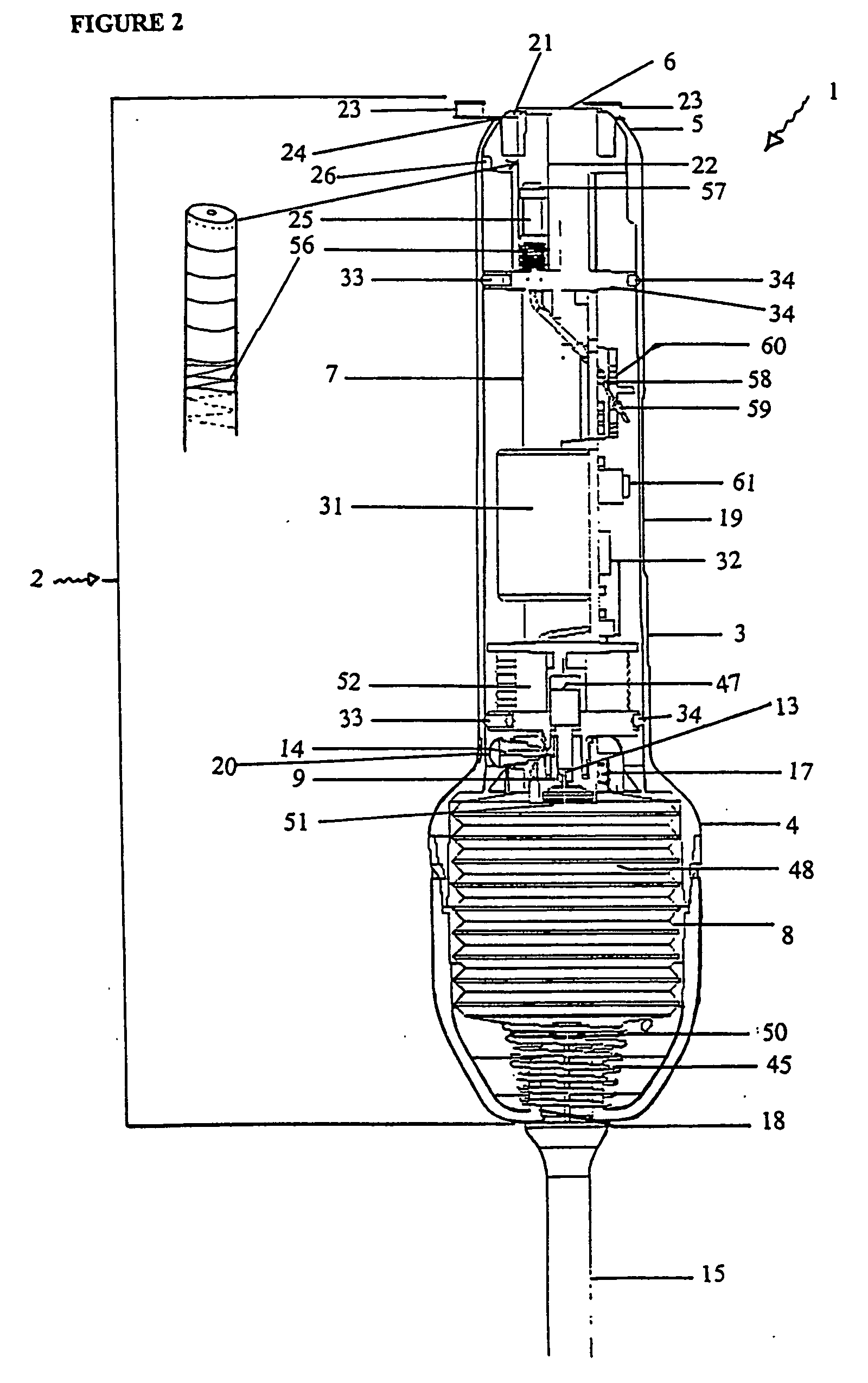Substance delivery device
a delivery device and substance technology, applied in the direction of medical devices, pharmaceutical delivery mechanisms, medical science, etc., can solve the problems of inability to deliver multiple substances, inability to deliver substances in a variety of forms, and difficulty in adjusting the pressure applied by the muscles, so as to improve the effect of progesterone, reduce and eliminate the occurrence of excessive mucous buildup
- Summary
- Abstract
- Description
- Claims
- Application Information
AI Technical Summary
Benefits of technology
Problems solved by technology
Method used
Image
Examples
Embodiment Construction
[0244] With reference to the diagrams by way of example only there is provided substance delivery device generally indicated by arrow 1. The substance delivery device 1 is capable of insertion into a body cavity or passage of an animal. FIGS. 1 and 2 are diagrammatic perspective views of the device 1.
[0245] The substance delivery device 1 includes a body generally indicated by arrow 2. The body 2 includes a front portion 3 (shown in FIG. 5), a back portion 4 (shown in FIG. 6) and a nosecone arrangement 5 associated with the front portion (shown in FIGS. 4 and 4a). The nose cone portion 5 interacts with nose cap 6 (shown in FIG. 3).
[0246] The body 2 encases the chassis generally indicated by arrow 7 (shown in FIGS. 7, 7a and 7b) of the device 1 which is essentially the skeleton of the device 1 and with which most of the internal components are associated.
[0247] The rear portion 4 of the body 2 encases a reservoir 8 (or bellows shown in FIGS. 9, 9a, and 9b) which contains a liquid ...
PUM
 Login to View More
Login to View More Abstract
Description
Claims
Application Information
 Login to View More
Login to View More - R&D
- Intellectual Property
- Life Sciences
- Materials
- Tech Scout
- Unparalleled Data Quality
- Higher Quality Content
- 60% Fewer Hallucinations
Browse by: Latest US Patents, China's latest patents, Technical Efficacy Thesaurus, Application Domain, Technology Topic, Popular Technical Reports.
© 2025 PatSnap. All rights reserved.Legal|Privacy policy|Modern Slavery Act Transparency Statement|Sitemap|About US| Contact US: help@patsnap.com



